cervical cancer can result from a sexually transmitted disease, such as chlamydia.
 Chlamydia May Increase Risk of Cervical Cancer
Chlamydia May Increase Risk of Cervical CancerLog in using your username and password Main menu Log in using your username and password You are here. Article textAltmetric.comGenital Statistics Chlamydia trachomatis infections have been recognized as an important public health problem. The World Health Organization (WHO) estimates that 50 million cases of trachomatis infection occur every year around the world. Trachomatis is the main cause of mucopurulent cervicitis, pelvic inflammatory disease, tubal infertility and ectopian pregnancy. Therefore, the costs of medical care due to complications caused by C trachomatis infections are enormous. Cervical cancer is the most common cancer in women around the world. Epidemiological studies have shown that early sexual activity is a risk factor for cervical cancer. The types of high-risk human papilloma (HPV) are found in virtually all cervical carcinomas. The evidence that binds the types of HPV oncogens in the aetiology of cervical carcinoma is undoubted. Longitudinal studies based on HPV DNA have confirmed the seroepidemiological findings that the previous HPV infection predisposes the development of cervical carcinoma. Since Trachomatis infection is also a marker of sexual activity, an association between trachomatis C and cervical cancer has been suggested. Previous case-control studies have found cytological or serological evidence of the role of trachomatis C in cervical neoplasia.– Recent longitudinal seroepidemiological studies also show that trachomatis C infection is associated with cervical carcinoma., This association remains after the setting for smoking and serum antibodies to high-risk HPV types. The association was specific for squamous cell carcinoma, and not for adenocarcinoma. Of specific C-trachomatis serotypes, serotype G was more strongly associated with cervical squamous cell carcinoma. In addition, the presence of serum IgG antibodies to more than one serotype increased the risk. The link between trachomatis and squamous cell carcinoma is unexpected as it is well known that the objectives of trachomatis are endocervical glandular cells, and that women with cervical ectopia are more susceptible to trachomatis than women without cervical ectopia. However, the endocervical epithelium of the transformation zone suffers a process known as squamous metaplasia, and metaplastic cells are also targets for tracomatis C. In fact, persistent clamidiary infection can be one of the factors that induce squamous metaplasia and metaplastic atypia of cells., no association has been shown between the presence of C trachomatis antibodies and the development of non-cervical anogenital cancers. The incidence of ovarian cancer is increasing. Ovarian cancer is the number one killer among gynecological diseases. Ovarian cancer is unknown. Incipient ovulation and exposure to high levels of gonadotropin increase the risk of ovarian cancer while gestating, breastfeeding, use of oral contraceptives and tubalt ligation, all protect against ovarian cancer. Concern about the risk of ovarian cancer associated with the treatment of infertility or infertility has intensified by several reports. – However, although the association has become less compelling on the basis of many subsequent larger studies, it is tempting to speculate that a common cause of salpingitis, oofritis and infertility such as trachomatis C infection may explain the link between cancer and cancer 1). Curiously, a study of cancer incidence correlations suggests that cervical cancer and ovarian cancer may have common aetiological factors. However, the presence or absence of HPV DNA or trachomatis C DNA in benign or malignant ovarian tumors has not been widely studied. It is well known that inflammatory clamidial pelvic disease (PID) is associated with high levels of serum of tumor markers associated with ovarian cancer CA-125 and TATI (associated tumoral trippsy inhibitor). These tumor markers may reflect tissue damage and the interruption of the basement membrane seen in severe ophoritis. An association between auto-reported PID and subsequent ovarian cancer has been reported in a histologically verified epithelial ovarian cancer control study. Using the overall probabilities ratio and the estimated life prevalence of the history of the IDP, the authors estimated that approximately 9% of ovarian cancer in the population could be due to the previous IDP. However, another recent study did not confirm these results. Epidemiological studies that link the past history of PID and ovarian epithelial cancer in later life are problematic, because the history of PID is not reliable and because the levels of clamidal antibody decrease over time. Thus, the epidemiological evidence available to date is far from convincing. The link between chlamydia and cancer is biologically plausible because many other chronic bacterial infections have been related to the development of malignant diseases. Already in 1936 the venereum of lymphoma (LGV) caused by the L2 strain of trachomatis was linked to cancer. In addition, another common microbe, Helicobacter pylori has been associated with the development of gastric cancer., The result and sequel of chronic or subclinical chlamydia infection can be influenced by the host immune response. Chromodial thermal shock proteins (HSP) induce humoral and cellular immune responses eliminated in individuals who develop long-term sequelae. Therefore, cervical chlamyidiary infection can result in local immune disturbances that favor the persistence or progression of infection caused by high-risk HPV types. The poor immune response can lead to the persistence of the body and the development of the immune mediated tissue lesion that increases the risk of malignant transformation. Serotype G has been associated with symptomatic infections and upper genital tract infections., Serotype G was also associated with cervical carcinoma. Thus, the specific serotypes of C trachomatis could be more virulent than others, and perhaps less sensitive to appropriate antimicrobials, and therefore they could participate in carcinogenesis. Carcinoma development has been going on for several years, probably decades. The link between bacterial infections and carcinogenesis is unclear, but genetic damage and neoplastic changes can be induced into vitro by cocultor cells with activated inflammatory cells. The release of nitric oxide occurs in trachoma infections. Recent studies have shown that trachomatis inhibits apoptosis of host cells by specific mechanisms. In chronic chlamydia infections these mechanisms could initiate or promote carcinogenesis. Both the specific differences of serotype and the fact that the risk was greater in women exposed to more than one serotype suggest that trachomatis may have a role in cervical carcinogenesis. It is tempting to speculate on the possible molecular mechanisms that explain this association, for example, whether specific determinants related to specific clamamidial serotypes could be directly or indirectly carcinogenic. However, until it has been shown that the confirming evidence of an association is premature to conclude that trachomatis C is causally related to these cancers. The hypothetical link between tracomatis C and ovarian epithelial cancer. *PID = pelvic inflammatory disease; †PCO = polycetic ovaries. ReferencesRequest permits If you wish to reuse any or all of this article, please use the link below that will take you to the RightsLink service of the Copyright Settlement Center. You will be able to get a quick price and instant permission to reuse the content in many different ways. Copyright Information: Read the full text or download the PDF: Sign in with your username and passwordOnline: ISSN 1472-3263Print: ISSN 1368-4973 Copyright © 2021 BMJ Publishing Group Ltd. All rights reserved. 4.00ICP sponsors15042040 forwarded-3

Facts About 6 Common STIs | National Center for Health Research

Sexually transmitted infections (STIs) | ITF Seafarers
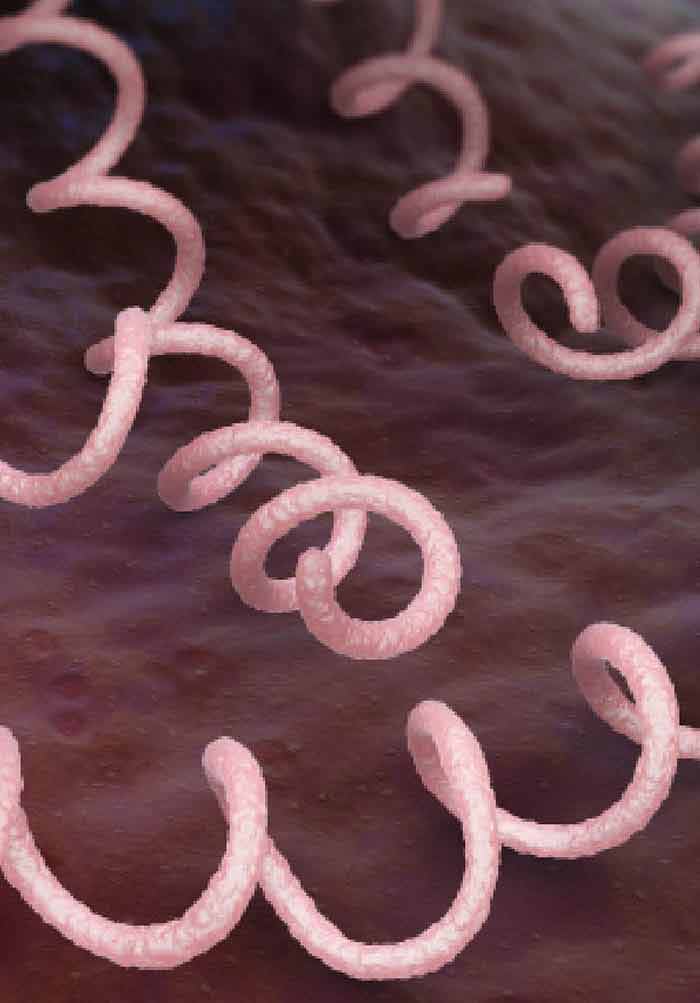
Cervical Cancer, a Sequela of a Sexually Transmitted Infection: The Human Papillomavirus Infection | IntechOpen

Cervical Cancer: Causes, Symptoms, Prevention, and Treatment

Against the odds: what is your risk of getting an STD through a one-off heterosexual encounter?
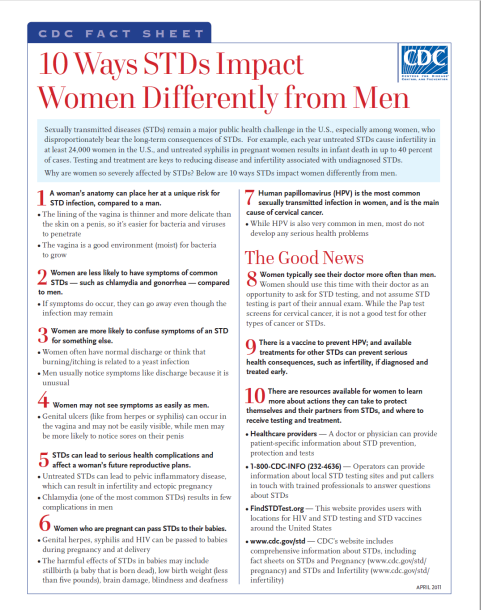
Sexually Transmitted Infections and Infertility - Important Women's Health Issues

Cervical cancer can result from a sexually transmitted disease, such as chlamydia. True or False - Brainly.in
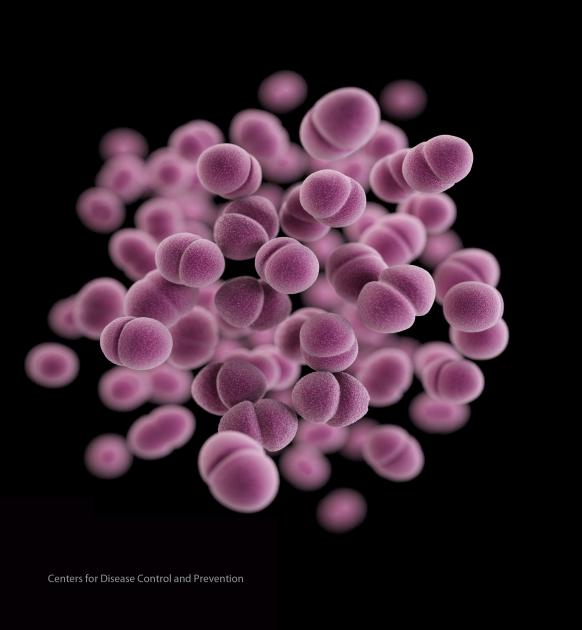
Sexually Transmitted Diseases | NIH: National Institute of Allergy and Infectious Diseases

WHO | HIV/AIDS and other sexually transmitted infections

Sexually Transmitted Infections or Diseases (STIs or STDs) | The Well Project

Dangerous Liaisons: Recognising the hidden risks of sexually transmitted diseases

Sexually transmitted infection (STI) Top Myths and Facts.

Introduction to Sexually Transmitted Infections | Springer Publishing

STDs in Women and Infants - 2018 Sexually Transmitted Diseases Surveillance

Sexually Transmitted Diseases

The vaginal microbiota and its association with human papillomavirus, Chlamydia trachomatis, Neisseria gonorrhoeae and Mycoplasma genitalium infections: a systematic review and meta-analysis - Clinical Microbiology and Infection

Sexually Transmitted Diseases | Health Testing Centers
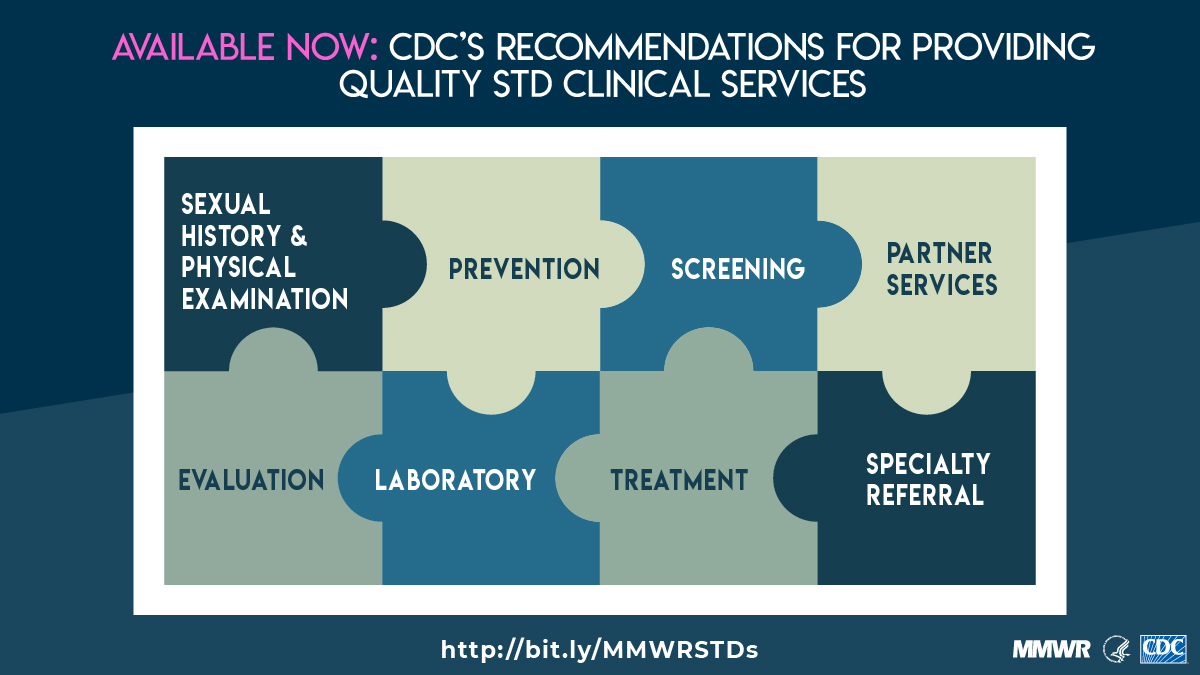
Recommendations for Providing Quality Sexually Transmitted Diseases Clinical Services, 2020 | MMWR
:max_bytes(150000):strip_icc()/std-diagnosis-3133242_final_CORRECTED-b7c7022dc607415ea250f10c34bc34ca.jpg)
How STDs Are Diagnosed
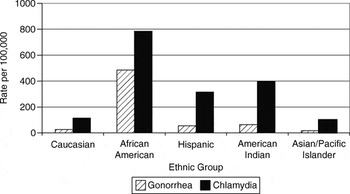
Sexually transmitted diseases (Chapter 12) - Handbook of Women's Health

Core Concepts - Sexually Transmitted Diseases - Co-Occurring Conditions - National HIV Curriculum
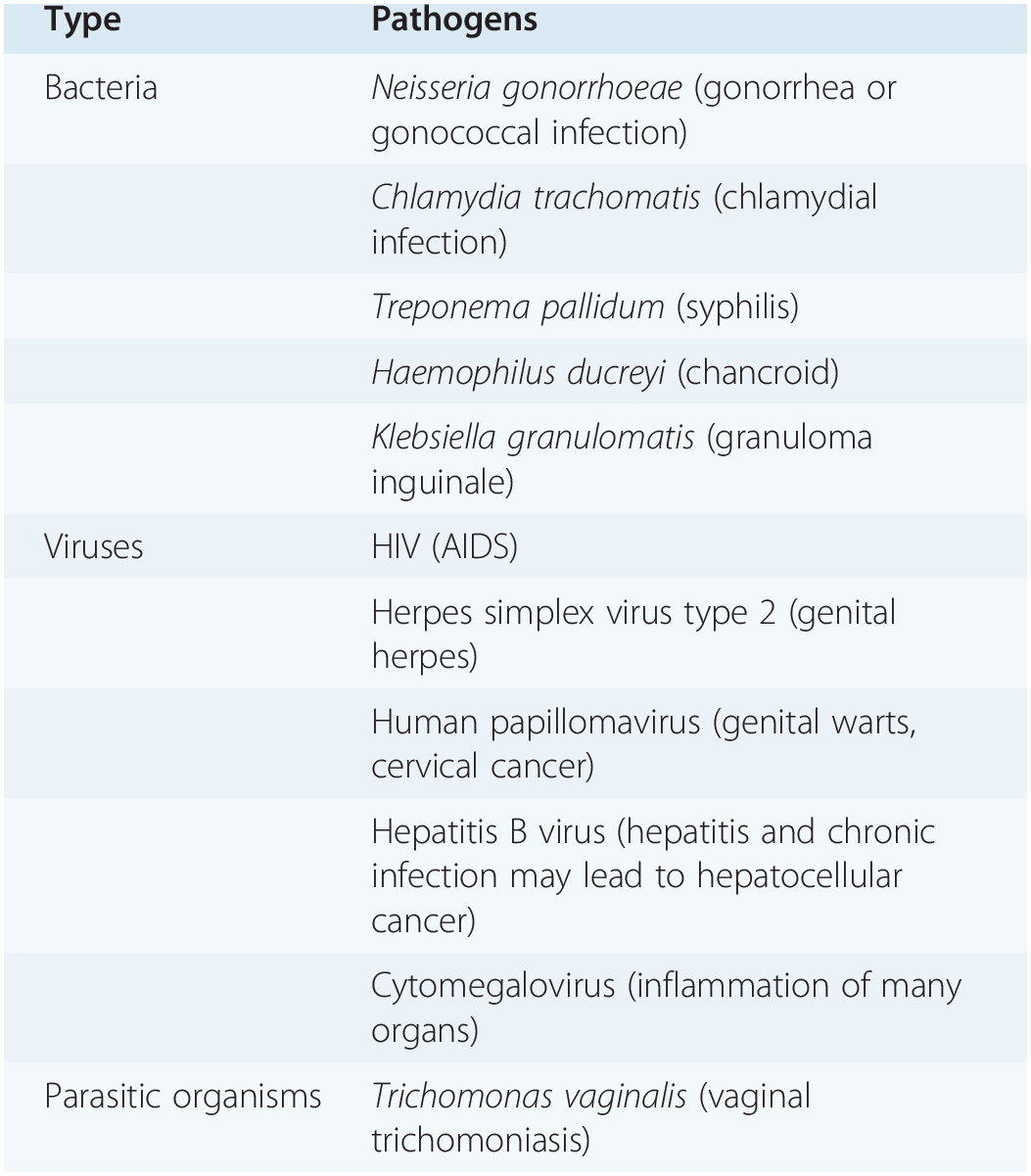
Sexually transmitted diseases (Chapter 22) - Clinical Gynecology
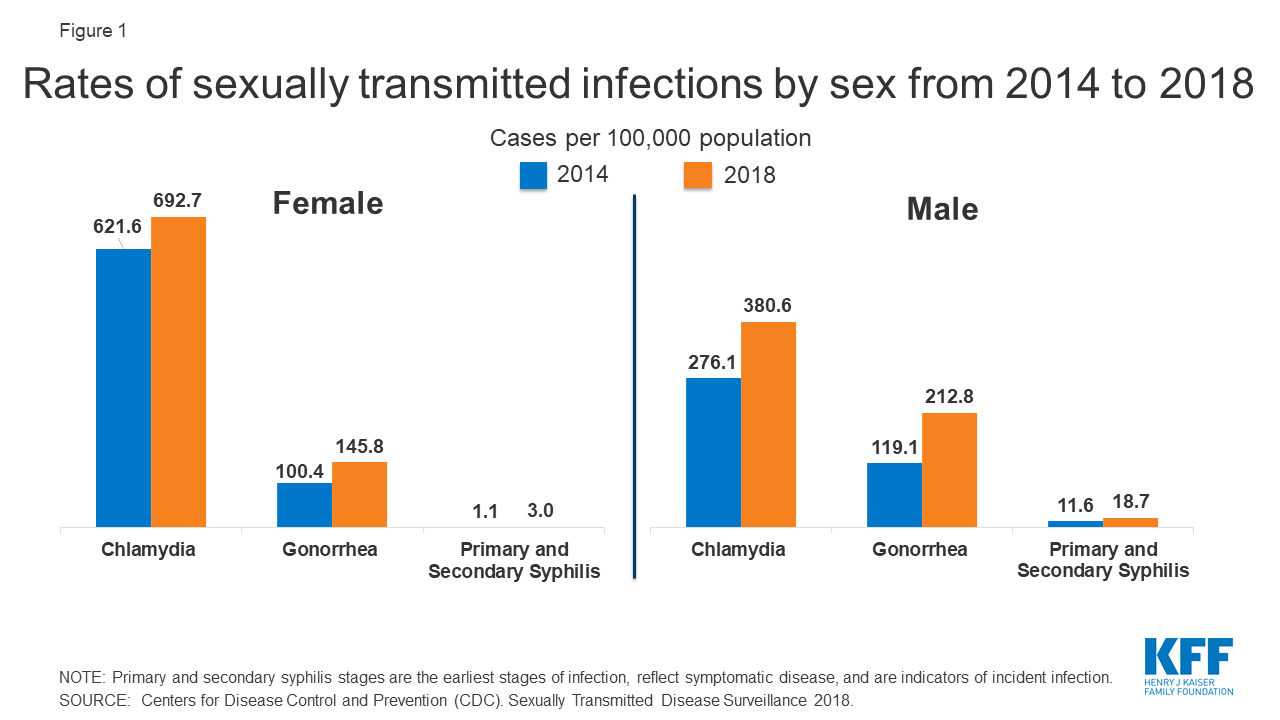
Sexually Transmitted Infections (STIs): An Overview, Payment, and Coverage | KFF
Chlamydia Fact Sheet

Sexually transmitted infections (STIs): Types and symptoms

Sexually Transmitted Diseases | Health Testing Centers

Sexually Transmitted Diseases Information - Chlamydia, Gonorrhea, Herpes | Teen Vogue

PrEP and sexually transmitted infections | aidsmap

Sexually transmitted infections are on the rise: Should you worry? - Harvard Health Blog - Harvard Health Publishing
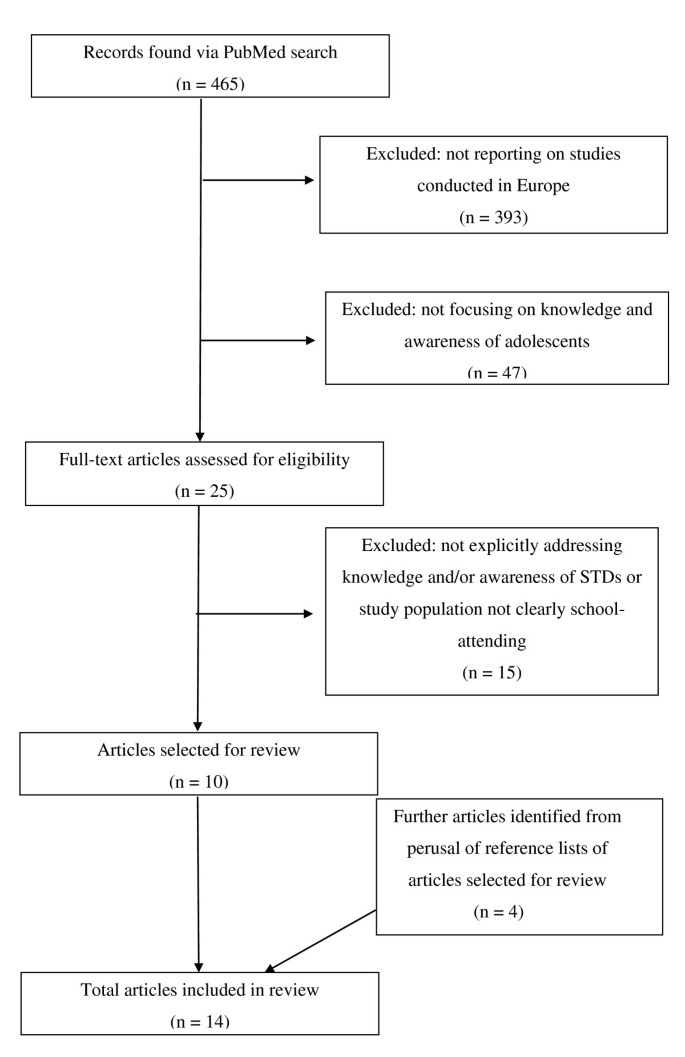
Awareness and knowledge of sexually transmitted diseases (STDs) among school-going adolescents in Europe: a systematic review of published literature | BMC Public Health | Full Text
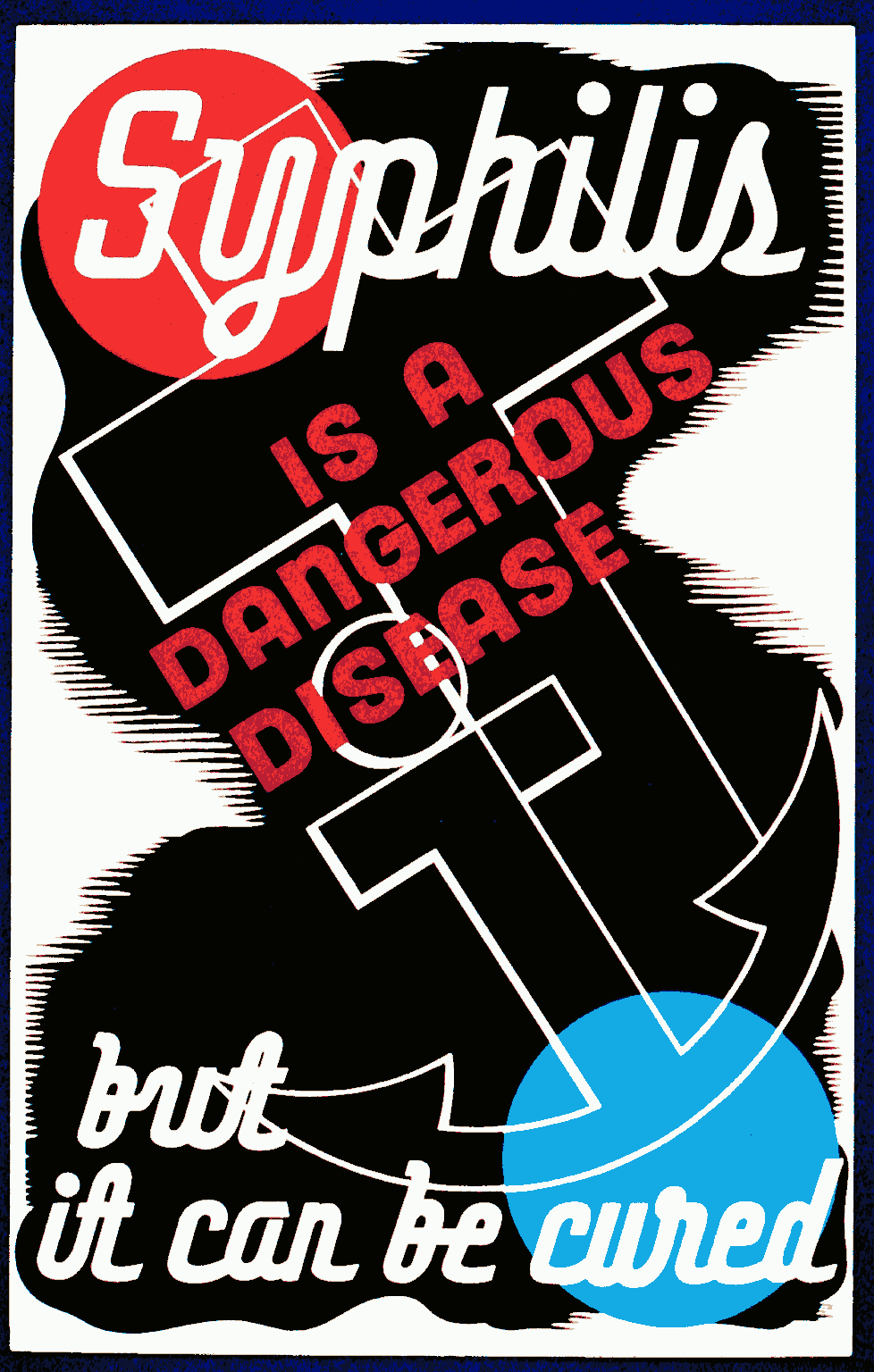
Sexually transmitted infection - Wikipedia

Why Sexually Transmitted Infections Can't Shake Their Stigma - The New York Times

STIs spreading at rate of more than 1m a day, says WHO | Sexual health | The Guardian
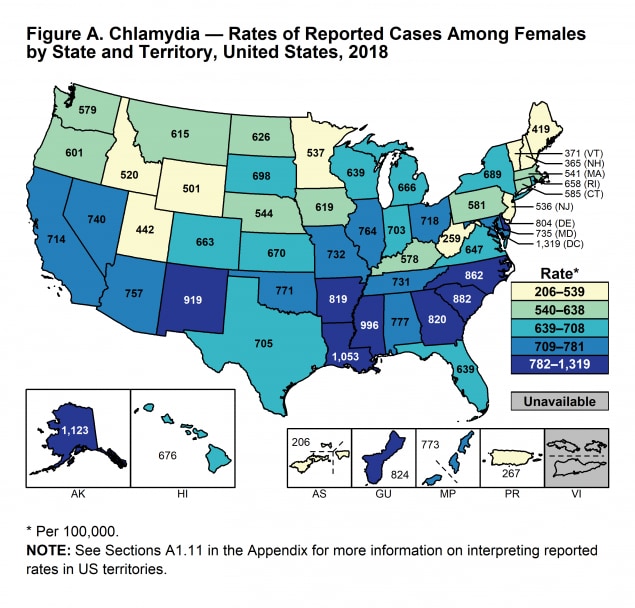
STDs in Women and Infants - 2018 Sexually Transmitted Diseases Surveillance

12 Preventable STDs: Pictures, Symptoms, Diagnosis, Treatment

Sexually Transmitted Infections: Impact and Cost-Effectiveness of Prevention - Major Infectious Diseases - NCBI Bookshelf
/chlamydia-symptoms-5aeca3ffc5542e0036b9ef51.png)
Chlamydia: Signs, Symptoms, and Complications

How do you know if you have an STD? - Blog | Everlywell: Home Health Testing Made Easy

STI: 12 sexually transmitted infection symptoms

The epidemiology of sexually transmitted infections in the UK: impact of behavior, services and interventions | Future Microbiology
Posting Komentar untuk "cervical cancer can result from a sexually transmitted disease, such as chlamydia."